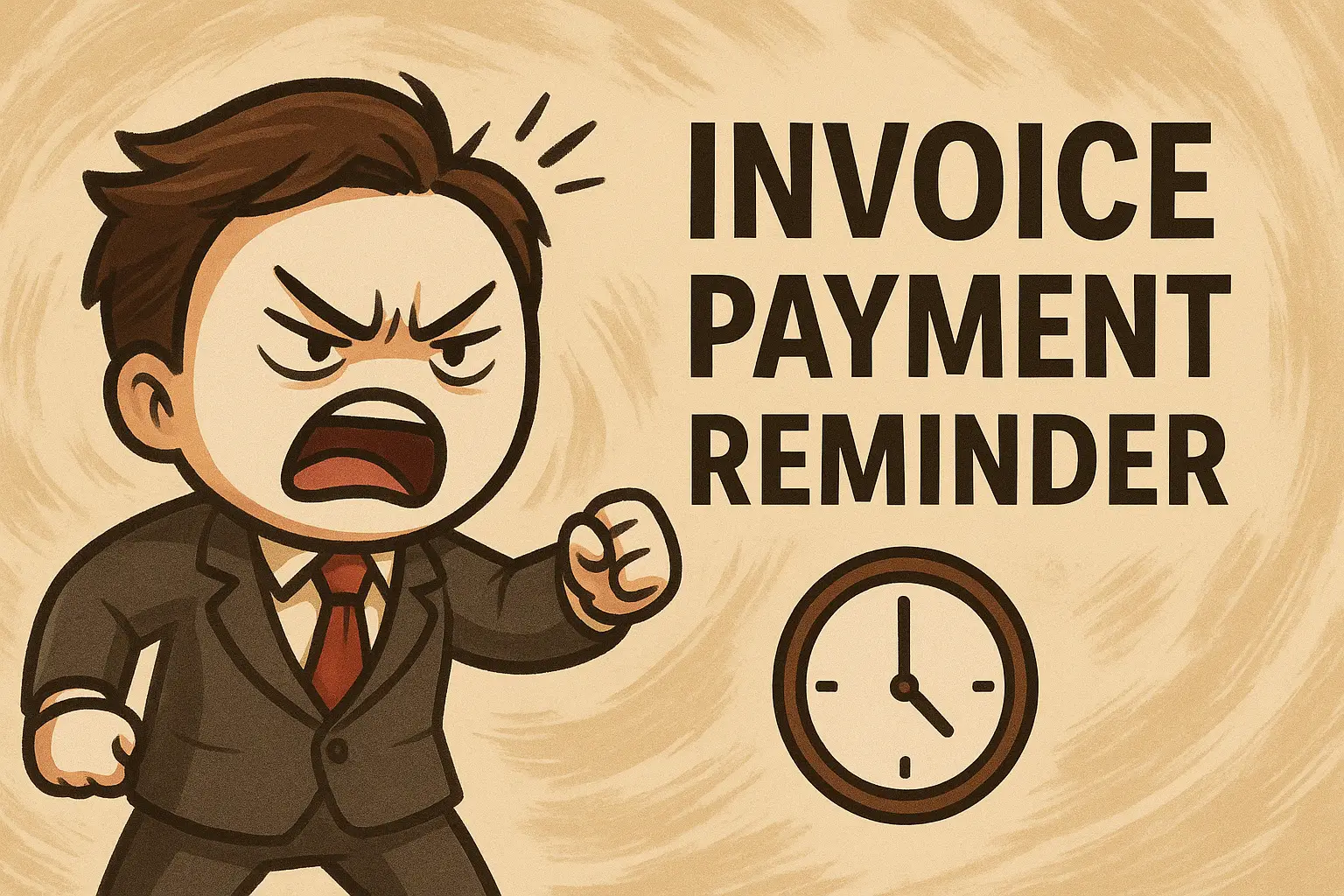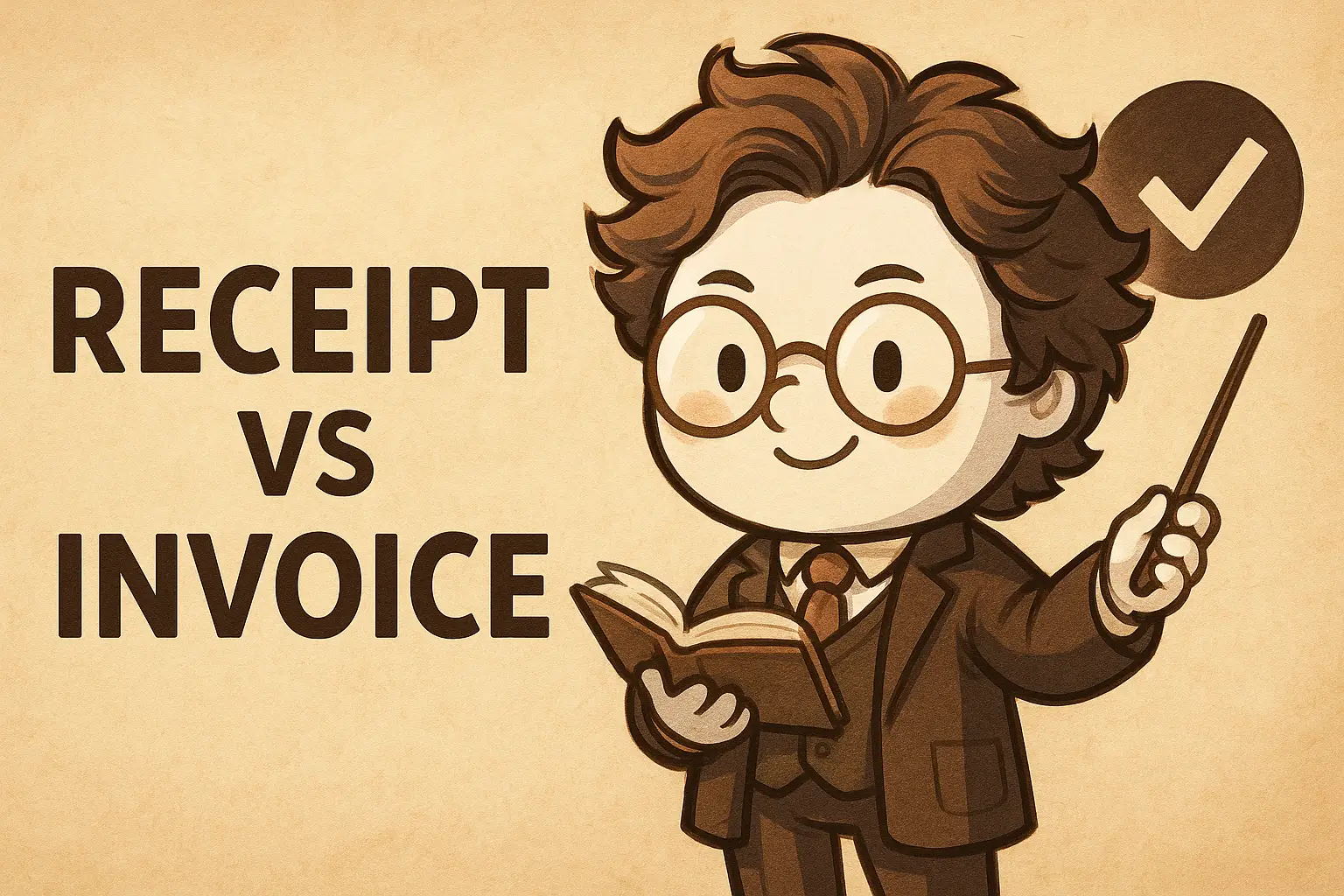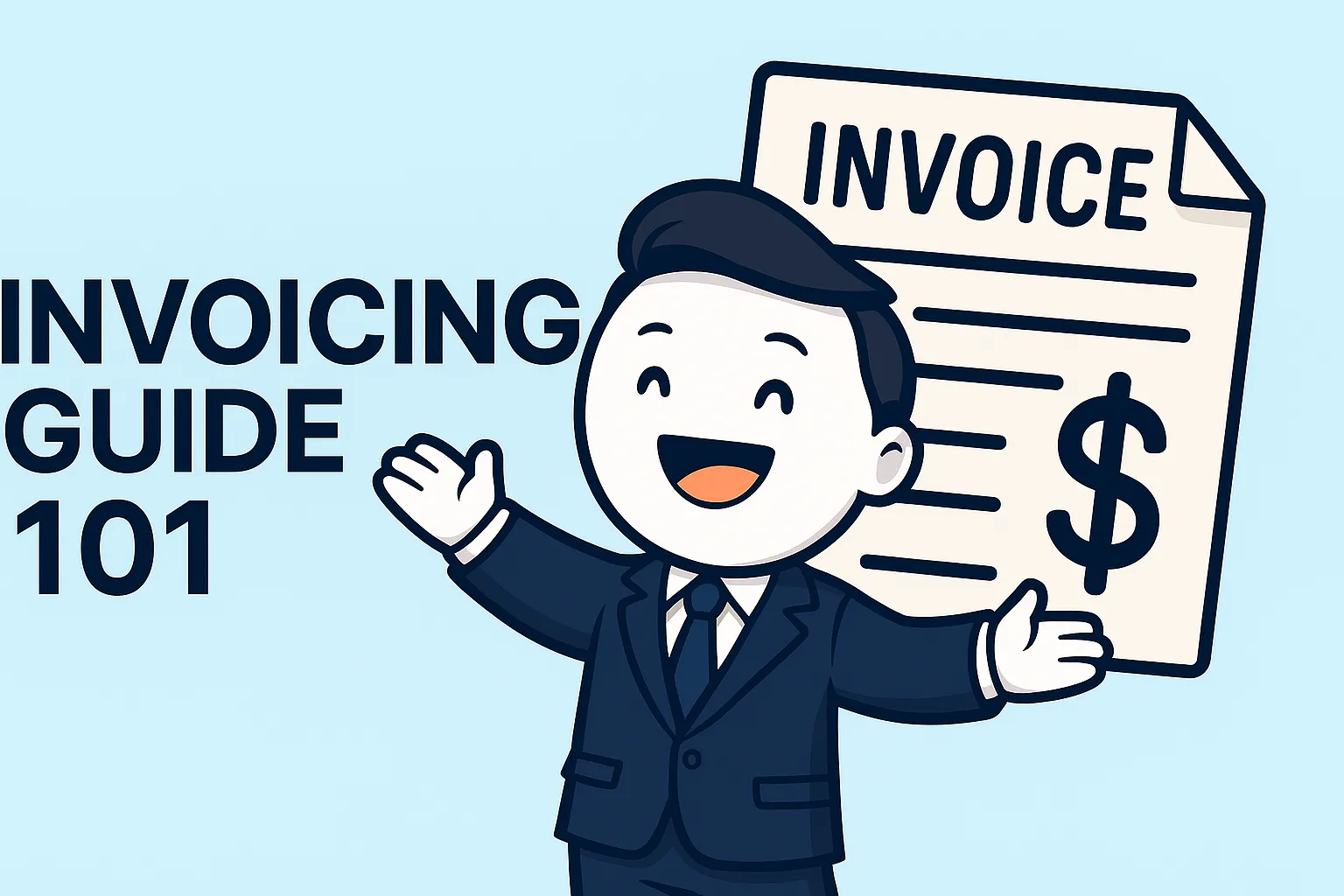Late payments are the silent killer of small business cash flow. Studies show that the average invoice takes 26 days to get paid, with many stretching far beyond their due dates. But here's the thing: most late payments aren't malicious—they're simply forgotten or lost in the shuffle of busy business operations.
That's where strategic payment reminders come in. When done correctly, payment reminders can accelerate your cash flow, reduce bad debt, and actually strengthen client relationships. This comprehensive guide will show you exactly how to create a payment reminder system that gets results while maintaining professionalism.
Understanding the Psychology of Payment Reminders
Before diving into tactics, it's crucial to understand why payment reminders work and how client psychology affects payment behavior.
Why Clients Pay Late
Most late payments stem from organizational issues rather than financial problems. Common reasons include invoice processing delays, approval bottlenecks, forgotten due dates, or simple human error. Understanding this helps you approach reminders with empathy rather than aggression.
The Power of Gentle Persistence
Research shows that friendly reminders sent 3-5 days before the invoice due date can significantly improve on-time payment rates. The key is positioning yourself as helpful rather than demanding, which maintains positive relationships while securing payment.
Timing Psychology
Payment behavior follows predictable patterns. Most businesses process payments on specific days of the week or month. Understanding your clients' payment cycles allows you to time reminders for maximum effectiveness.
The Strategic Payment Reminder Timeline
Creating a systematic reminder schedule ensures consistent follow-up without overwhelming clients or appearing desperate.
Pre-Due Date Reminder (3-5 Days Before)
This proactive approach catches invoices before they become overdue. A friendly nudge before the due date serves as a gentle reminder, ensuring your invoice is top-of-mind for your clients.
Purpose: Prevent late payments by bringing invoices to attention before they become problems.
Tone: Friendly and helpful, positioning the reminder as a courtesy service.
Content Focus: Upcoming due date, payment methods, and contact information for questions.
Due Date Reminder
Send a payment reminder on the official invoice due date as a gentle reminder that payment is officially due. This maintains urgency without being confrontational.
Purpose: Emphasize that payment is now due while maintaining professional relationships.
Tone: Professional but understanding, acknowledging that payment processing takes time.
Content Focus: Payment due today, available payment options, and next steps if payment is already processed.
First Overdue Reminder (3-7 Days Late)
Keep the first reminder as friendly as possible, as the client might have simply forgotten to make the invoice payment. This is where you begin addressing the overdue status while maintaining relationship focus.
Purpose: Address overdue payment while preserving client relationships.
Tone: Concerned but patient, assuming good faith and offering assistance.
Content Focus: Payment is now overdue, potential reasons for delay, and how to resolve quickly.
Second Overdue Reminder (10-14 Days Late)
This reminder acknowledges that the situation requires more attention while introducing consequences or next steps.
Purpose: Escalate urgency while providing clear paths to resolution.
Tone: More direct but still professional, introducing accountability.
Content Focus: Consequences of continued delay, payment plan options, and deadline for resolution.
Final Notice (21-30 Days Late)
The second email should be more direct and explain the consequences of not paying. This is your last attempt before involving collections or legal action.
Purpose: Final opportunity for voluntary payment before external intervention.
Tone: Firm and serious, clearly outlining next steps.
Content Focus: Final notice status, immediate payment required, and consequences of non-payment.
Crafting Effective Payment Reminder Messages
The content of your payment reminders can make the difference between quick payment and prolonged delays. Here's how to write messages that get results.
Essential Elements Every Reminder Must Include
Clear Subject Lines: Draft a clear subject line with the invoice number and due date, so that the recipient won't overlook it in their inbox. This immediately communicates urgency and helps with email organization.
Invoice Details: Always include the invoice number, original due date, and total amount due. This eliminates confusion and makes it easy for clients to locate the original invoice.
Payment Methods: Start by clearly outlining all available payment methods in your email, whether it's a link to an online portal or other options. The easier you make it to pay, the faster you'll receive payment.
Contact Information: Provide multiple ways for clients to reach you with questions or concerns. This shows you're accessible and willing to work together on solutions.
Writing Tone and Language Best Practices
Use Simple Language: Avoid using sophisticated words or complex terms that might confuse recipients. Clear, straightforward communication is more effective than impressive vocabulary.
Be Specific: Vague language creates confusion and delays. Always specify exact amounts, due dates, and required actions.
Stay Professional: Even when frustrated, maintain a professional tone that reflects well on your business and preserves relationships.
Show Empathy: Acknowledge that business challenges happen and express willingness to work together on solutions when appropriate.
Personalization Strategies
Address Recipients by Name: Generic greetings feel impersonal and may be ignored. Use the actual contact person's name whenever possible.
Reference Specific Projects: Mention the specific work or products the invoice covers. This helps clients immediately understand what payment is needed.
Acknowledge Payment History: For good clients with temporary issues, reference their positive payment history to maintain goodwill.
Payment Reminder Templates That Work
Having proven templates saves time while ensuring consistent, professional communication. Here are battle-tested templates for each stage of the reminder process.
Pre-Due Date Friendly Reminder
Subject: Friendly Reminder: Invoice #[NUMBER] Due [DATE]
Hi [CLIENT NAME],
I hope this message finds you well. This is a friendly reminder that Invoice #[NUMBER] for [PROJECT/SERVICE] is due on [DATE].
Invoice Details:
- Invoice Number: [NUMBER]
- Amount Due: $[AMOUNT]
- Due Date: [DATE]
Payment Options:
- Online: [PAYMENT LINK]
- Bank Transfer: [DETAILS]
- Check: [MAILING ADDRESS]
If you have any questions or need the original invoice resent, please don't hesitate to reach out. Thank you for your continued business!
Best regards, [YOUR NAME]
Due Date Reminder
Subject: Payment Due Today: Invoice #[NUMBER]
Hi [CLIENT NAME],
This is a quick reminder that payment for Invoice #[NUMBER] is due today ([DATE]).
Payment Details:
- Amount Due: $[AMOUNT]
- Invoice Date: [DATE]
- Service/Product: [DESCRIPTION]
If you've already processed this payment, thank you! Please disregard this reminder. If you have any questions or need assistance, I'm here to help.
Quick Payment Options: [PAYMENT LINK BUTTON] [ALTERNATIVE PAYMENT METHODS]
Thank you for your business!
[YOUR NAME]
First Overdue Reminder
Subject: Overdue Payment: Invoice #[NUMBER] - Let's Resolve This
Hi [CLIENT NAME],
I wanted to reach out regarding Invoice #[NUMBER], which became overdue on [DATE]. The outstanding balance is $[AMOUNT].
I understand that things can get busy, and invoices sometimes get overlooked. If there's any issue with the invoice or if you need to discuss payment arrangements, please let me know.
To resolve quickly:
- Pay online: [LINK]
- Questions? Reply to this email or call [PHONE]
- Need the original invoice? I can resend immediately
I value our business relationship and want to work together to resolve this promptly.
Best regards, [YOUR NAME]
Second Overdue Reminder
Subject: Urgent: Invoice #[NUMBER] Now [X] Days Overdue
Hi [CLIENT NAME],
Invoice #[NUMBER] for $[AMOUNT] is now [X] days overdue. Despite my previous reminder, payment has not been received.
Current Status:
- Original Due Date: [DATE]
- Days Overdue: [X]
- Amount Due: $[AMOUNT]
To avoid any late fees or service interruptions, please arrange payment by [NEW DEADLINE]. If there are extenuating circumstances, please contact me immediately to discuss payment arrangements.
Immediate Payment Options: [PAYMENT LINKS]
I need to hear from you within 48 hours to resolve this matter.
[YOUR NAME]
Final Notice Template
Subject: FINAL NOTICE: Invoice #[NUMBER] - Immediate Action Required
[CLIENT NAME],
This is the final notice regarding Invoice #[NUMBER] for $[AMOUNT], which is now [X] days overdue.
Account Status:
- Invoice Number: [NUMBER]
- Original Due Date: [DATE]
- Days Overdue: [X]
- Amount Due: $[AMOUNT] (plus late fees)
Payment must be received within 7 days of this notice. Failure to remit payment will result in:
- Account being sent to collections
- Additional collection fees
- Potential legal action
- Suspension of services
Immediate Payment Required: [PAYMENT LINK]
If payment has been sent, please provide confirmation immediately. For payment arrangements, contact me within 24 hours.
[YOUR NAME] [BUSINESS NAME] [CONTACT INFORMATION]
Automation and Technology Solutions
Manual payment reminders are time-consuming and inconsistent. Modern technology can automate much of the process while maintaining personalization.
Benefits of Automated Reminders
With automated reminders, customers automatically receive an email or text at certain intervals, and staff are free to work on more high-value tasks. This ensures consistent follow-up without consuming valuable time.
Key Automation Features to Look For
Customizable Timing: Set up automated reminders based on invoice issue date, due date, or any day of the month to ensure reminders are sent at the right time.
Multiple Communication Channels: There are two types of payment reminders: SMS and Email, and timing is everything. Choose systems that support both channels for maximum reach.
Payment Integration: Create automated payment reminders along with a link to payment, making it as simple as possible to pay.
Setting Up Automated Workflows
Trigger Points: Configure reminders to trigger based on specific events like due dates, overdue periods, or client payment history.
Escalation Schedules: Create workflows that automatically escalate reminder tone and frequency based on how overdue payments become.
Personalization Rules: Set up dynamic content that pulls client names, invoice details, and project information automatically.
Advanced Payment Reminder Strategies
Once you've mastered basic reminders, these advanced strategies can further improve your payment collection rates.
Client Segmentation Approaches
Different clients require different reminder strategies. Customer segmentation ensures reminders are sent across to your customers at the right time.
New Clients: More frequent, educational reminders that explain your payment process and expectations.
Established Clients: Gentler reminders that reference positive payment history and offer flexibility.
Problem Accounts: Firmer, more structured reminders with clear consequences and shorter timelines.
Multi-Channel Communication
Email Primary: Most professional and provides detailed information with links.
SMS Backup: Quick, immediate notifications that are hard to ignore.
Phone Calls: Personal touch for high-value accounts or serious overdue situations.
Direct Mail: Final formal notice for legal documentation purposes.
Payment Incentives and Penalties
Early Payment Discounts: Offer 2-3% discounts for payments made within 10 days to encourage quick payment.
Late Payment Fees: Clearly outlined penalties that increase with time to create urgency.
Payment Plans: Structured options for clients experiencing temporary financial difficulties.
Legal Considerations and Compliance
Understanding legal requirements protects your business and ensures your reminder process is enforceable.
Documentation Requirements
Keep detailed records of all payment reminders sent, including dates, methods, and client responses. This documentation is crucial if legal action becomes necessary.
Fair Debt Collection Practices
Even for your own invoices, certain regulations may apply to your collection efforts. Research local laws regarding payment collection to ensure compliance.
Interest and Late Fee Regulations
Different jurisdictions have varying rules about late fees and interest charges. Ensure your penalties are legally enforceable and clearly communicated upfront.
Measuring Payment Reminder Effectiveness
Track key metrics to optimize your reminder strategy and improve cash flow over time.
Key Performance Indicators
Days Sales Outstanding (DSO): Improving DSO through reminders leads to better cash flow and reduced financial risk.
Payment Response Rates: Percentage of clients who pay after each type of reminder.
Average Days to Payment: How long it takes to collect payment after sending reminders.
Client Retention: Ensure your reminder process doesn't damage long-term relationships.
Continuous Improvement Strategies
A/B Testing: Test different reminder timing, content, and channels to identify what works best for your client base.
Client Feedback: Ask clients about their preferred reminder methods and timing.
Regular Reviews: Monthly analysis of payment patterns to identify trends and opportunities.
Maintaining Client Relationships During Collection
The ultimate goal is getting paid while preserving valuable business relationships for future opportunities.
Relationship-Preserving Techniques
Assume Good Intent: Approach reminders assuming clients want to pay but need gentle guidance.
Offer Solutions: Provide payment plan options or alternative arrangements when clients face challenges.
Express Appreciation: Always thank clients for their business, even when collecting overdue payments.
When to Be Flexible
Long-term Clients: Consider flexibility for established clients with good payment history facing temporary difficulties.
Large Accounts: Work with major clients on payment arrangements rather than rigid enforcement.
Economic Downturns: Adjust your approach during challenging economic periods while protecting your cash flow.
When to Stand Firm
Repeat Offenders: Clients with patterns of late payment need consistent enforcement.
Small Accounts: Don't let small accounts consume disproportionate collection efforts.
Clear Bad Faith: When clients are obviously avoiding payment rather than experiencing difficulties.
Integration with Overall Business Processes
Payment reminders work best when integrated with your broader business operations.
Invoice Design Impact
Well-designed invoices with clear payment terms and methods reduce the need for extensive reminders. Ensure your invoices set proper expectations from the start.
Client Onboarding
Educate new clients about your payment process, reminder schedule, and expectations during the initial relationship setup.
Contract Terms
Include specific language about payment reminders, late fees, and collection procedures in your service agreements.
Troubleshooting Common Reminder Challenges
Even well-designed reminder systems face obstacles. Here's how to handle common issues.
Non-Responsive Clients
When clients don't respond to multiple reminders, escalate through different communication channels and consider involving decision-makers at higher levels.
Disputed Invoices
Address disputes quickly and professionally. Sometimes "late" payments are actually invoice disputes that need resolution.
Technical Issues
Ensure backup communication methods when automated systems fail or emails bounce.
Cultural Considerations
Adjust your approach for international clients who may have different payment cultures or business practices.
Building a Sustainable Reminder System
Creating a payment reminder system that grows with your business requires strategic planning and regular optimization.
Scalability Considerations
Choose tools and processes that can handle increasing client volumes without proportional increases in administrative burden.
Team Training
If you have staff handling reminders, create clear procedures and training materials to ensure consistency.
Technology Evolution
Stay current with new tools and features that can improve your reminder effectiveness and efficiency.
TL;DR
Effective payment reminders are both an art and a science that directly impact your business's financial health and client relationships. By implementing a systematic approach that combines strategic timing, persuasive communication, and appropriate technology, you can dramatically improve your cash flow while maintaining positive client relationships.
Remember that payment reminders are ultimately about communication and relationship management. The goal isn't just to collect money—it's to create a professional, predictable payment process that clients understand and respect.
Start by implementing the basic reminder timeline outlined in this guide, then gradually add advanced strategies as your business grows. Track your results consistently and adjust your approach based on what works best for your specific client base and industry.
The investment you make in creating a professional payment reminder system will pay dividends through improved cash flow, reduced bad debt, and stronger client relationships. Whether you're using automated reminder tools or managing the process manually, the principles remain constant: be professional, be persistent, and always focus on solutions rather than problems.
Take action today by reviewing your current payment reminder process against the strategies outlined in this guide. Identify areas for improvement and implement changes systematically. Your future self will thank you when payments start arriving faster and your client relationships remain strong throughout the collection process.


